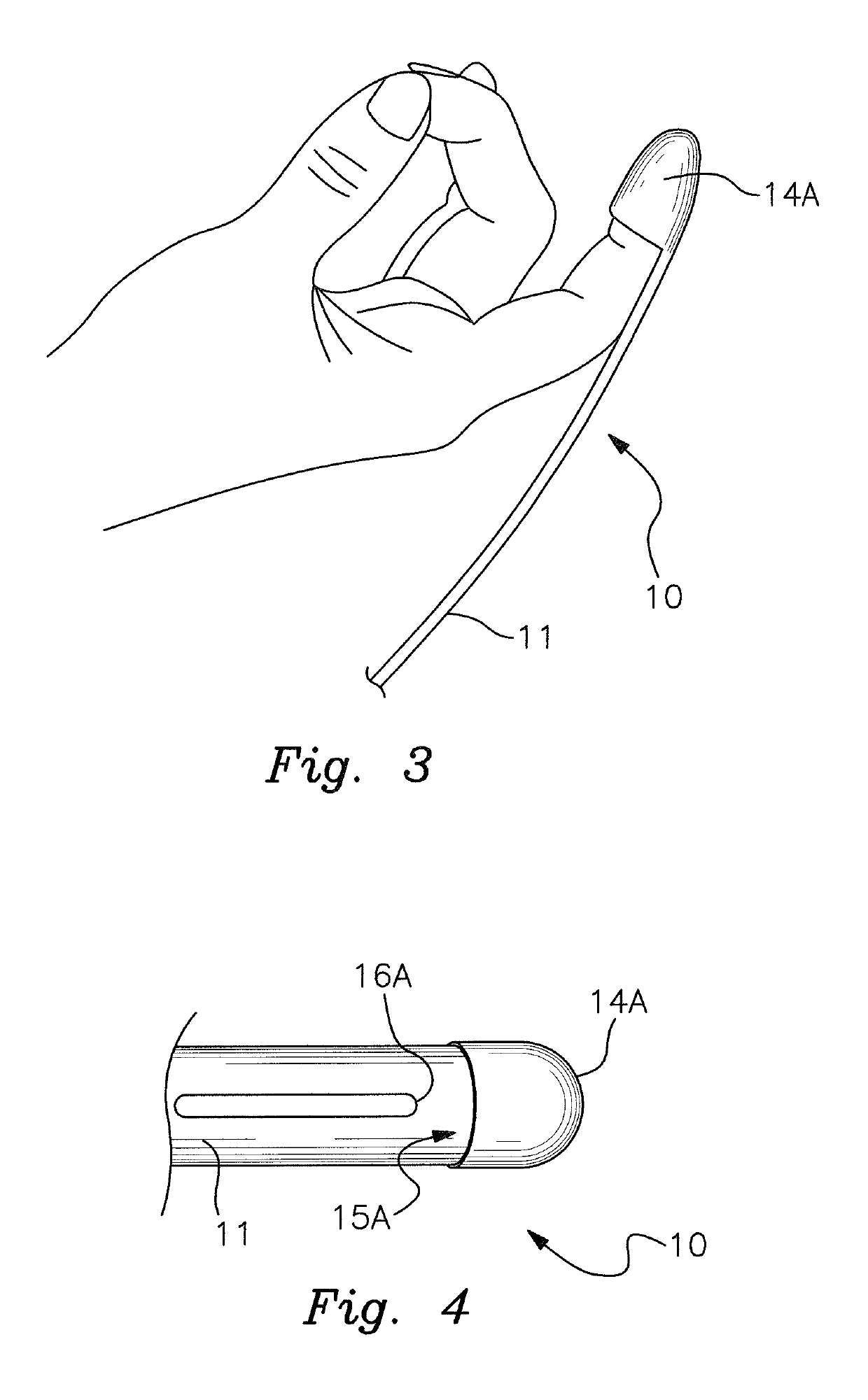Subaxillary traction device to address shoulder dystocia during childbirth
a technology of subaxillary traction and childbirth, which is applied in the field of subaxillary traction device to address shoulder dystocia during childbirth, can solve the problems of permanent nerve injury, shoulder dystocia is serious and unpredictable obstetrical complication, and the affected limb is paralyzed, so as to prevent the device from slipping
- Summary
- Abstract
- Description
- Claims
- Application Information
AI Technical Summary
Benefits of technology
Problems solved by technology
Method used
Image
Examples
Embodiment Construction
[0014]With reference to the drawings, the subaxillary traction device will now be described in detail with regard to multiple embodiments. The various embodiments as illustrated and described herein are not meant to be limiting, such that it is the intent that the scope of the invention be defined by the language of the claims.
[0015]As shown in the figures, the subaxillary traction device 10 comprises in general an elongated body portion 11 having a first end 12, a second end 13, at least one receptacle member 14 disposed on the first end 12, a handle opening 16 disposed adjacent or near the first end 12 and a handle opening 16 disposed adjacent or near the second end 13. Preferably a second receptacle member 14 is disposed on the second end 13. Although the traction device 10 may be composed of distinct materials bonded or otherwise connected, it is most preferable that the traction device 10 be composed of a single material that is flexible, pliable, non-rigid and supple. Most pre...
PUM
 Login to View More
Login to View More Abstract
Description
Claims
Application Information
 Login to View More
Login to View More - R&D
- Intellectual Property
- Life Sciences
- Materials
- Tech Scout
- Unparalleled Data Quality
- Higher Quality Content
- 60% Fewer Hallucinations
Browse by: Latest US Patents, China's latest patents, Technical Efficacy Thesaurus, Application Domain, Technology Topic, Popular Technical Reports.
© 2025 PatSnap. All rights reserved.Legal|Privacy policy|Modern Slavery Act Transparency Statement|Sitemap|About US| Contact US: help@patsnap.com


